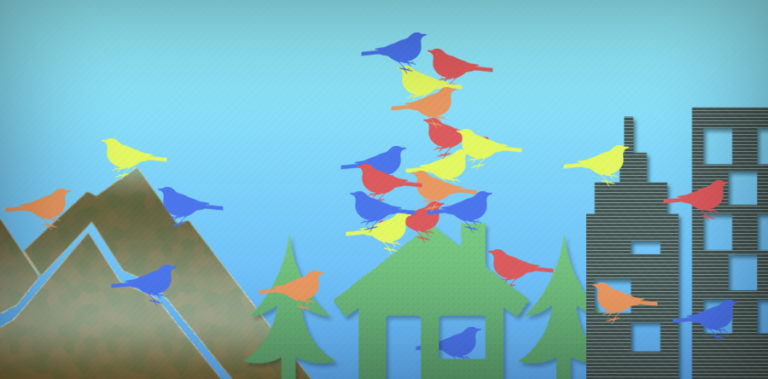Ask any birder, “Where are the most birds at?” and the answers you’ll often hear are: the mountains, the beach, a wildlife reserve, etc.
But is that where most of the birds actually are? Turns out that in order to see the largest variety of birds, the furthest you have to look is your backyard…
John Marzluff from University of Washington and a few of his students did a study to count the number bird species in several different Seattle settings–their findings were surprising.
When the group counted birds in downtown Seattle they encountered the usual inhabitants: starlings, hummers, pigeons, crows, sparrows, etc., for a total of 15 birdies. Moving to the outskirts of the city to a mountainous area, they counted for about 20 minutes and spotted roughly 20 species.
The final location they counted birds was in the suburbs. They expected to find more birds than the city and less than the mountains, but they were surprised.
[box] “We were astonished,” Marzluff writes. The suburban count (again in the first 10 minutes) was “30 or more species,” says Marzluff, some from downtown, some from the mountains, but also spectacularly new samples of “violet-green swallows, willow flycatchers, killdeer, orange crowned warblers, American goldfinches, and Bewick’s wrens … [plus a few] white crowned sparrows.” The suburbs produced, by far, the most biologically diverse collection of birds. –NPR[/box]
One cause for this is the sheer diversity of plants and trees found in the suburbs. People have a large range of tastes when it comes to plants and flowers, so these things produce many types of seeds and fruits for birds to feast upon. Feeders are also very popular and depending on the types of seeds provided it attracts different species.
This doesn’t mean that you, gentle reader, should be discouraged from seeking out new and different habits to seek new birds and boost those eBird life lists, but with a little bit of patience, you can see more birds than you imagine in your own back yard. There are many good resources out there to help you make the right planting decisions based on the types of birds you want to see. I will compile some a seed list to help fill those feeders in the future.
Marzluff has a book about this very phenomenon called Welcome to Subirdia coming out shortly. You should definitely check it out.
The next bird I’m set out to see is the adorable Red-whiskered Bulbul. This tropical-looking bird can actually be found regularly hanging out at the Huntington Botanical Gardens in San Marino, CA. I hope to make it over there this weekend to photograph this lovely bird, then swing by the Pasadena Public Library to see the wild parrots that roost there every day around 4PM.
Wish me luck!
Read more about this study and see some sweet watercolor paintings on NPR’s website

